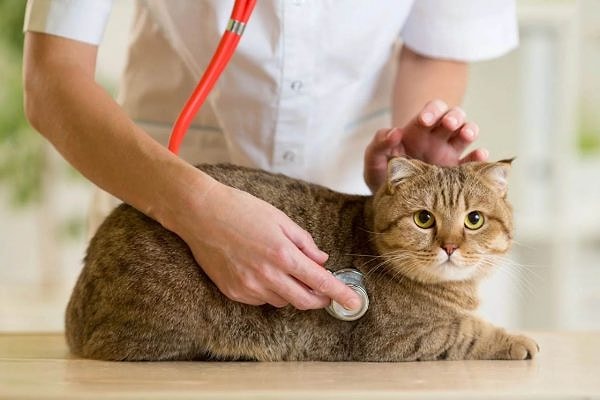When it comes to our beloved pets, their health and well-being are always top priorities. Just like humans, dogs and cats are prone to various illnesses throughout their lives. Some conditions are minor and treatable at home, while others require prompt veterinary attention. Our Dog and Cat Illness Guide is here to help you identify, understand, and manage common health issues—empowering you to be a more informed and proactive pet owner.
Whether you’re caring for a playful puppy, a curious kitten, or a senior companion, this guide will walk you through the most frequent dog and cat illnesses, symptoms to watch for, preventive steps, and when to seek veterinary care.
Why Understanding Pet Illnesses Matters
Pets can’t tell us when something is wrong. They rely on us to recognize early warning signs. Many illnesses, if caught early, can be treated successfully and affordably. Waiting too long may result in higher vet bills—or worse, irreversible damage to your pet’s health.
That’s why being familiar with common dog and cat illnesses is a key part of responsible pet ownership.
Common Dog Illnesses and Their Symptoms

Dogs are active, social animals, but they’re also susceptible to many health issues. Below are some of the most common illnesses in dogs and how to identify them:
1. Parvovirus (Parvo)
- Highly contagious viral disease, especially dangerous for puppies.
- Symptoms: Lethargy, vomiting, bloody diarrhea, fever, dehydration.
- Prevention: Vaccination, avoiding unvaccinated dogs.
2. Kennel Cough (Canine Infectious Tracheobronchitis)
- A contagious respiratory disease spread through air or shared items.
- Symptoms: Persistent dry cough, nasal discharge, sneezing, lethargy.
- Prevention: Bordetella vaccination.
3. Canine Distemper
- A potentially fatal virus affecting the respiratory, digestive, and nervous systems.
- Symptoms: Fever, coughing, discharge from eyes/nose, seizures.
- Prevention: Vaccination and avoiding sick animals.
4. Hip Dysplasia
- A genetic skeletal condition that affects larger breeds.
- Symptoms: Limping, difficulty getting up, reluctance to exercise.
- Prevention: Weight control, appropriate exercise, breeder screening.
5. Ear Infections
- Often caused by yeast, bacteria, or allergies.
- Symptoms: Head shaking, scratching, foul odor, redness.
- Prevention: Regular ear cleaning, especially in floppy-eared breeds.
Common Cat Illnesses and Their Symptoms
Cats tend to hide their symptoms, which makes regular observation crucial. Here are some of the most frequent feline health concerns:
1. Upper Respiratory Infections (URIs)
- Common in shelter or multi-cat environments.
- Symptoms: Sneezing, nasal discharge, coughing, eye discharge.
- Prevention: Vaccination, stress reduction, isolation of sick cats.
2. Feline Lower Urinary Tract Disease (FLUTD)
- Can be caused by bladder stones, infections, or stress.
- Symptoms: Straining to urinate, bloody urine, frequent litter box visits.
- Prevention: Proper hydration, special diets for at-risk cats.
3. Feline Leukemia Virus (FeLV)
- Weakens the immune system and increases cancer risk.
- Symptoms: Weight loss, poor coat, recurrent infections.
- Prevention: Vaccination, indoor living.
4. Chronic Kidney Disease (CKD)
- Common in older cats.
- Symptoms: Increased thirst/urination, weight loss, poor appetite.
- Prevention: Early detection, prescription diets, fluid therapy.
5. Dental Disease
- Can affect both dogs and cats, but often overlooked in cats.
- Symptoms: Bad breath, drooling, pawing at the mouth, tooth loss.
- Prevention: Regular brushing, dental treats, vet cleanings.
How to Use the Dog and Cat Illness Guide Effectively
- Monitor Symptoms Early: Be attentive to behavioral and physical changes.
- Keep a Medical Record: Track vaccinations, allergies, and health history.
- Know Breed-Specific Risks: Some breeds are genetically prone to conditions.
- Visit the Vet Regularly: Annual checkups help with early diagnosis.
- Preventative Measures: Include routine vaccinations, flea/tick control, proper diet, and exercise.
When to Call the Vet
If your dog or cat is showing any of the following, call your veterinarian immediately:
- Loss of appetite for more than 24 hours
- Vomiting or diarrhea lasting more than a day
- Blood in urine, stool, or vomit
- Seizures or unresponsiveness
- Difficulty breathing
- Sudden behavioral changes
Never wait and see if your pet’s symptoms worsen—early action can save lives.
Internal Resources to Explore
Here are some helpful resources within our site to explore further:







